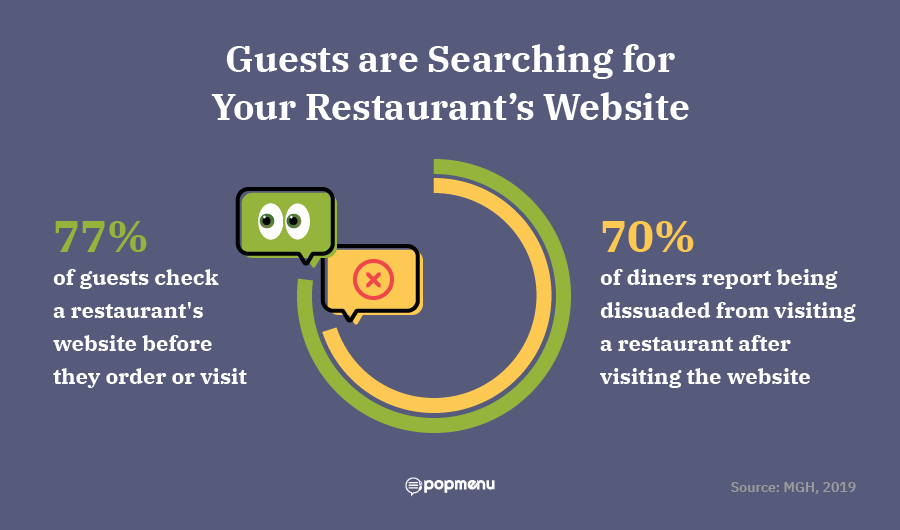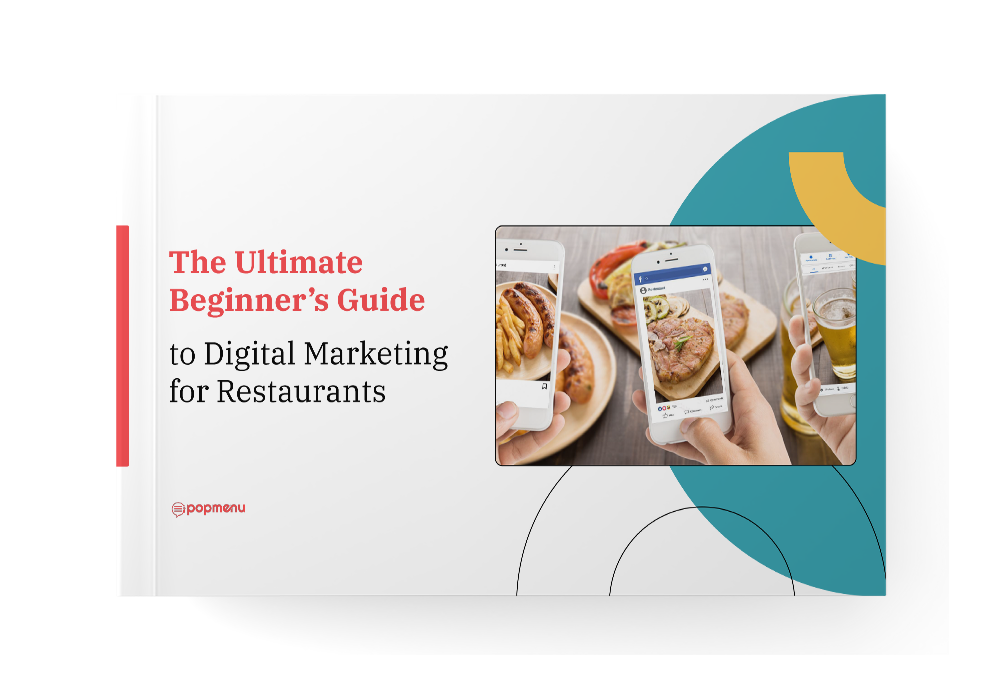
Restaurant website design doesn't require a designer anymore

The internet is such a ubiquitous part of our lives now, it's hard to remember that it's still a pretty new technology (i.e., less than 50 years old!). And in the short time it's existed, it's grown and changed in almost unfathomable ways.
For example, not very long ago, a business that wanted to build a website would have to hire a web designer, investing money, time, and expertise into the process. But that's not the case anymore. Restaurant website design is a lot easier than it used to be, and that's come with big benefits for restaurants both big and small.
If you've found yourself wondering what's the best way to build your restaurant website in the digital age, this is the article for you. Read on to learn why restaurant websites are so important, how the process of building one has changed over time, and how to choose the best method of restaurant website design for your business's needs.
Why Is it So Important to Have a Restaurant Website?
The statistics paint a clear picture of why it's so important for restaurants to have websites.
A recent MGH survey found that 77 percent of diners visit a restaurant's website before dining in or ordering food, and 70 percent of consumers reported that they've actually been dissuaded from giving their business to a restaurant because something was wrong with its website.

Of the 1,101 consumers MGH surveyed, 69 percent of them said they check a restaurant's website to help them decide if they want to dine in, while 43 percent said they'll check the website to help them decide if they want to order takeout or delivery. Most of them said they were only looking for the restaurant's menu, but reported that bad photography or a website that's difficult to navigate might turn them off from ordering before they even know what dishes are on offer.
In addition to the MGH survey, Upserve recently found that 90 percent of diners research a restaurant online before visiting it—more than any other business type. Upserve also found that in addition to online reviews, 57 percent of those diners checked multiple restaurant websites while deciding where they wanted to eat.
And Toast found that while the majority of diners still discover new restaurants via word-of-mouth from family and friends, more and more people each year are discovering new restaurants online. In this landscape, it's becoming absolutely crucial for restaurants to have high-quality, well-maintained websites.
How Has Restaurant Website Design Changed Over Time?
Not all that long ago, creating a restaurant website was a lot harder. You needed a web designer who could custom-code your website. It was expensive and the process took a long time. Websites were difficult to maintain, especially for restaurateurs without a lot of technology experience.
But that's no longer the case, and it's all thanks to the no-code movement. No-code refers to a philosophy that "citizen developers" should be able to create tools, from websites to software and apps, without needing to write any code. The result is a wide variety of no-code platforms that use intuitive interfaces, drag-and-drop functionality, simple design features, and other tools to make building a custom tool accessible for anyone at any level of tech experience.
While you may not have heard of the no-code movement, you've likely heard of some of the no-code website builders it's inspired: WordPress, Squarespace, and Wix, just to name a few. Today, there are tons of options for no-code websites. Developers have realized that most business owners, including restaurateurs, aren't web designers—but they still need websites. Today, actually building the website is the easy part. What's hard is choosing the right platform to use to build your restaurant website when there are so many available.
How to Choose the Best Website Builder for your Restaurant
Search for "restaurant website builder" and you'll see that you have dozens of options. For restaurateurs who aren't the most tech-savvy, just the sheer number of options can be overwhelming. It's tempting to just go with the website builder at the top of the page, but the last thing you want is to create your website, then have to rebuild it later because it turns out your chosen platform doesn't meet your needs.
That's why choosing the right website builder from the outset is so important. With that in mind, here are the factors to consider and features to look for when choosing the right website builder for your restaurant.

Ease of Use
The whole reason restaurateurs use no-code website builders is because they're not web designers or developers. Some aren't tech-savvy at all, and that's OK—it's just vital that they choose a website builder that meets them where they are, regardless of their technical ability.
That's why one of the top considerations for restaurateurs is the ease of use of their chosen platform.
Setting up your restaurant website should be easy, fast, and intuitive. You should be able to customize the design of your site using templates, and rearrange features or widgets by dragging and dropping them. Most importantly, you should be able to create a custom website that meets your needs and stands out from your competition—and you should be able to do it without custom coding. Platforms like WordPress, which can incorporate custom code, are almost endlessly customizable—but that comes with higher costs and a steeper learning curve, two things restaurateurs might want to avoid.
As you're comparing website builders, keep in mind that no-code platforms come in a few different styles. You might use a completely self-serve platform, where you create your own website from start to finish. Or, you may make things even easier for yourself by choosing a platform where an expert will guide you through the process.
Features
This is the area where a lot of website builders fall short for restaurateurs.
Restaurant websites need certain features that are specific to restaurants. They need to be able to host your online menu so that it's mobile-optimized and searchable. You need to be able to accept online orders and coordinate deliveries via your website. You should be able to integrate your website with social media platforms and business tools like Google My Business. You should also be able to take reservations online.
Many website builders that are made for small businesses are not made just for restaurants. That means that while you may be able to get some (or even all) of the features listed above, many website building platforms will only offer them as plug-ins or integrations, often available at an extra cost, or only available to customers who pay for a premium membership. Considering the fact that many restaurants operate on a shoestring budget, a platform that includes all the tools you need at no extra cost is likely a better fit.
Price
That brings us to the third consideration for restaurants when choosing a website builder: The price.
While a website is an essential tool for a restaurant to have in the digital age, it still needs to be affordable. Anyone in the industry knows the kinds of margins restaurants tend to run on—there's simply no room in most restaurant budgets to accommodate an expensive, premium website.
When building a website, there are a few different costs to keep in mind: Web design, hosting, and domain costs.
Most website builders that are marketed toward small businesses give you the web design for free through a platform that allows you to design your site yourself, and then they charge for hosting—typically a monthly fee that includes some services, like maintenance and troubleshooting should anything go wrong with your site, and bonus features like custom email addresses. Another cost to plan for is your domain—you'll want to buy a web address that matches your restaurant's name or branding, and costs for domains vary depending on whether they're in demand.
Future Needs
The last factor restaurateurs should consider when choosing a website builder is actually the hardest one to account for: Their future needs.
It's impossible to predict the future. It's even more impossible to predict the future of restaurant technology in the digital age, when tech tools are emerging and evolving at incredibly fast rates. Trying to anticipate the future of your restaurant's technology needs might feel like trying to see through mud.
But the problem is that new restaurant technology will emerge, and your restaurant will need to adopt at least some of it to stay competitive. This is the biggest problem with website builders that aren't made specifically for restaurants: You have no way of knowing whether they'll stay up-to-date on the latest restaurant trends and technologies, or whether they'll offer those for your website at an affordable price.
So why not use the only website design platform that's made just for restaurants? That platform is Popmenu.
Restaurant Website Design Is Fast and Easy with Popmenu
Popmenu is more than just a website builder. It's an all-in-one digital toolkit for restaurants.
Here's what sets Popmenu apart, and what makes it the perfect website builder for restaurants:
- Ease of use: You have two options with Popmenu. You can work with an onboarding specialist who will help design your website alongside you, or you can use our Indie package to get your website up and running in just minutes using a professional template. It couldn't be easier (or faster).
- Features: Popmenu is loaded with features made by restaurateurs, for restaurateurs. In addition to your restaurant website, Popmenu comes with patented, interactive menu technology; automated digital marketing tools; waitlisting; contactless dining tools; online ordering; delivery integrations; AI phone answering; easy integrations with other popular restaurant technologies; and so much more.
- Price: All the features above are included in one affordable monthly price that never goes up (we guarantee it).
- Future needs: Popmenu is constantly evolving to meet the changing needs of a modern restaurant industry. We're keeping up with new technologies and trends, and making sure to meet them head-on with new products and features that help our restaurants stay on the cutting edge in an increasingly digital world. With Popmenu, you don't need to worry about your restaurant's future tech needs—we'll worry about that for you.
Creating your website with Popmenu is easy—and fast. Simply answer a few questions about your restaurant and we'll tailor a demo to fit your specific needs.
Restaurant website design doesn't require a designer anymore. But it does require the right platform to meet all of restaurants' unique digital needs. Schedule a free Popmenu demo today.





.jpeg)






